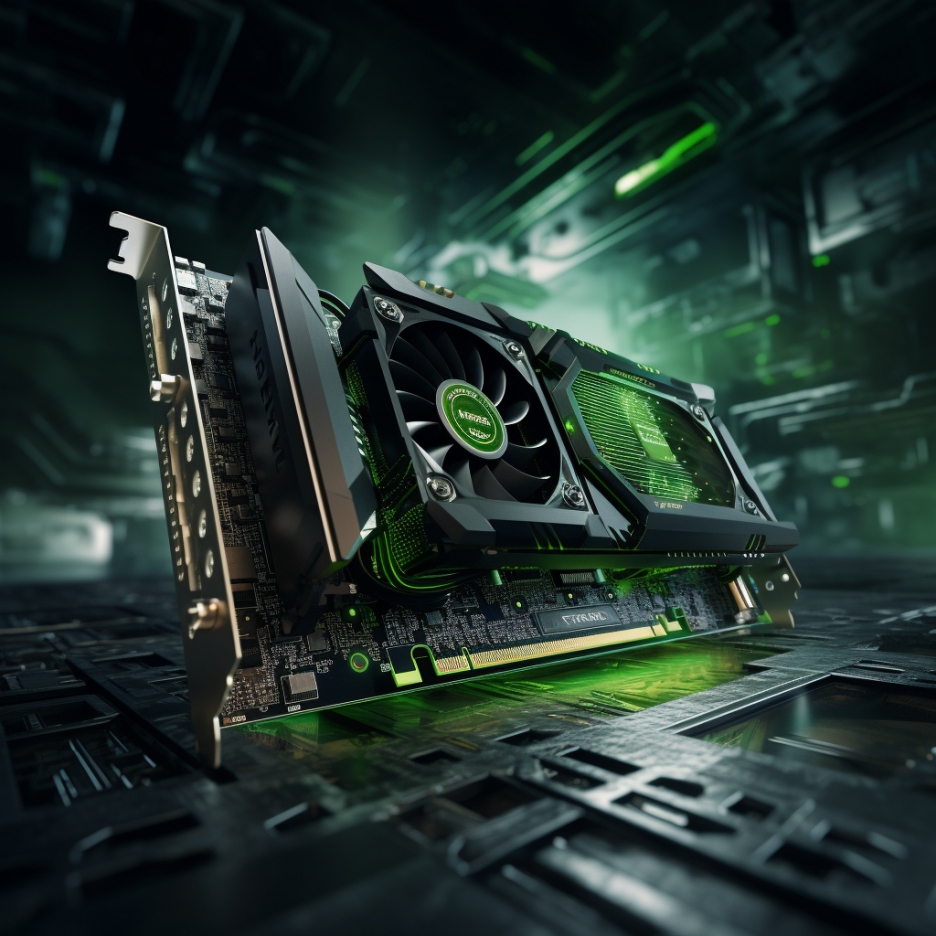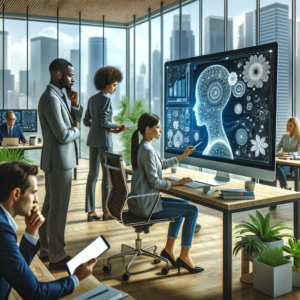Once a humble servant for rendering images, the Graphics Processing Unit (GPU) has evolved into a powerhouse driving some of today’s most exciting AI technological advances. But how did this transformation happen?
The GPU’s story began in the 1990s as a tool designed solely for boosting video game graphics. These early GPUs handled simple tasks like bitmap rendering and texture mapping. Fast forward to the early 2000s, and we see GPUs gaining more complex programmable shaders, enhancing gaming graphics closer to cinematic quality.
However, the real game-changer occurred when researchers realized that GPUs, with their parallel processing capabilities, could tackle more than just graphics. This led to GPUs being repurposed for scientific computing and, eventually, for powering AI and machine learning algorithms.
GPU vs. CPU: Differing Architects at Work
Imagine the CPU as a versatile but busy executive, handling a wide array of tasks efficiently but one at a time. In contrast, the GPU is like a team of specialists, less versatile but incredibly efficient at executing many tasks simultaneously.
The fundamental difference between the architecture of CPUs (Central Processing Units) and GPUs (Graphics Processing Units) lies in their core design philosophy and intended use cases.
CPU: The Versatile Generalist
- Core Structure: CPUs usually have a smaller number of cores, but these cores are incredibly powerful and capable of handling a wide range of tasks. Each core in a CPU is designed for sequential serial processing, which means it’s optimized for tasks that require complex decision-making or data-dependent operations.
- Control Units and Cache Memory: CPUs are equipped with sophisticated control units and large caches. These components are essential for quickly accessing and processing instructions and data, thereby enhancing the CPU’s ability to perform a wide array of general computing tasks efficiently.
- Branch Prediction and Out-of-Order Execution: Advanced features like branch prediction and out-of-order execution in CPUs further optimize performance for a variety of tasks. These features allow CPUs to anticipate the flow of instructions and process them more efficiently, reducing idle time and increasing speed.
GPU: The Parallel Processing Prodigy
- Core Structure: In contrast, GPUs consist of hundreds or thousands of smaller cores. These cores are less powerful individually compared to CPU cores but are highly efficient at performing similar or repetitive tasks in parallel. This architecture makes GPUs exceptionally good at handling tasks that can be broken down into smaller, concurrent operations.
- Memory Bandwidth: GPUs have a high memory bandwidth, which means they can read from and write to memory very quickly. This capability is crucial for handling large blocks of data simultaneously, a common requirement in graphics rendering and numerical analysis tasks.
- Stream Processors and Shader Cores: Modern GPUs include stream processors or shader cores, which are designed specifically for rendering graphics. These cores can also be repurposed for general-purpose computing in fields like AI and scientific computation, leveraging their parallel processing power.
Comparing GPUs to CPUs is like comparing a team of workers to a single multitasker. CPUs, akin to a multitasker, can handle a variety of tasks well but can only focus on a few at a time. This makes them slower for jobs requiring massive, simultaneous computations, like analyzing thousands of X-ray images.
GPUs, on the other hand, are like a large team where each member works on a small part of the task at the same time. This ‘teamwork’ approach allows GPUs to process many images simultaneously, leading to much faster analysis than a CPU could achieve.

This image was generated using the Discord AI platform.
Why GPUs Excel in AI and Machine Learning
GPUs have become the backbone of AI and machine learning due to their unparalleled parallel processing capabilities, which are ideal for handling the vast and complex computations these fields demand. Unlike CPUs, GPUs can execute numerous small, repetitive tasks simultaneously, making them particularly suited for the matrix and vector operations central to many AI algorithms. Their high bandwidth allows for rapid data transfer, essential when dealing with large datasets typical in machine learning. This architecture not only speeds up the processing of data but also enhances the efficiency of algorithms, especially in applications like deep learning.
To get a better understanding and feeling of the benefits that GPUs offer over CPUs, let’s take some example.
Enhancing Medical Diagnostics: The Role of GPUs in Streamlining AI Analysis
In the realm of technological advancements, one of the most impactful applications of GPUs lies in medical diagnostics, particularly in the rapid and accurate analysis of chest X-ray images for pneumonia detection.
AI in Healthcare: A Simplified Explanation
AI as a Diagnostic Tool:
Imagine a hospital where doctors use X-ray images to diagnose pneumonia. It’s a task that requires precision and speed. AI comes into play as a tool that can analyze these images quickly, helping doctors in their diagnosis.
The Process Made Simple:
- Collection of Data: The starting point is a vast collection of chest X-ray images. Each image is a piece of the puzzle, providing visual clues about the patient’s lung health.
- Teaching the AI: The AI system is like a digital student, learning to identify signs of pneumonia from these images. It’s trained with numerous examples, learning to spot the characteristics of pneumonia.
- GPUs Accelerating the Process: Here, GPUs act like powerful accelerators. They enable the AI system to go through thousands of images rapidly, much like flipping through pages in a book at incredible speed.
Real-World Benefits
In a real-world scenario, this means the AI system, powered by GPUs, can quickly scan through hundreds of images, identifying potential pneumonia cases almost instantly. This rapid analysis assists doctors in prioritizing patient care, especially in critical situations where time is crucial.
Without GPUs, this process would be akin to a single doctor painstakingly examining each X-ray one by one – a much slower and less efficient method. GPUs, therefore, emerge as indispensable tools in modern medical diagnostics, enabling swift and effective patient care.

Summary
Our exploration has revealed the remarkable evolution of Graphics Processing Units (GPUs) from specialized graphics rendering tools to fundamental enablers of advancements in AI and machine learning. This journey underscores a significant shift in technological application and capability.
Key Insights:
- Evolution of GPUs: Originating as devices focused on enhancing video game graphics, GPUs have transformed into versatile and powerful tools for complex computational tasks, especially in the realm of AI and machine learning.
- Architectural Advantages: The distinct architecture of GPUs, characterized by their ability to efficiently handle multiple tasks simultaneously, positions them as ideal candidates for the parallel processing requirements of AI algorithms.
- Suitability for AI Tasks: GPUs excel in the field of AI due to their capacity for rapid processing of large datasets and execution of intricate calculations, both essential elements in machine learning and deep learning applications.
- Broad Impact Across Industries: The practical application of GPUs extends far beyond medical diagnostics. Their influence spans various sectors, from automating image recognition to enhancing the speed and accuracy of complex data analysis, demonstrating their critical role in driving AI innovation.
The rise of GPUs in AI and machine learning signifies a major technological milestone. Their unparalleled data processing capabilities have not only accelerated the development and efficiency of AI models but have also catalyzed breakthroughs across numerous industries. As we continue to push the boundaries of technology, the role of GPUs is set to expand further, paving the way for more groundbreaking advancements and applications.











